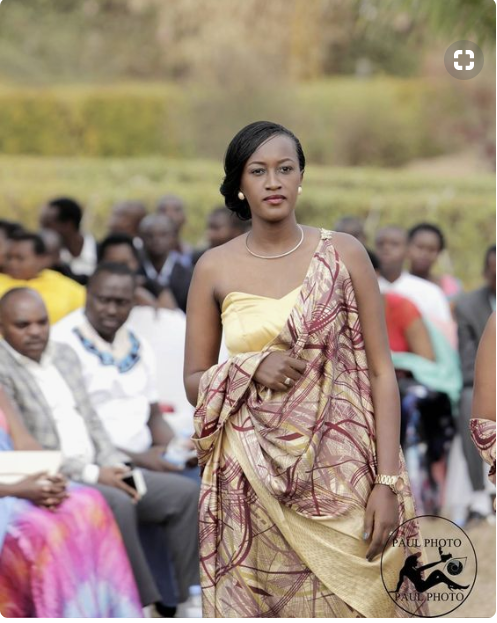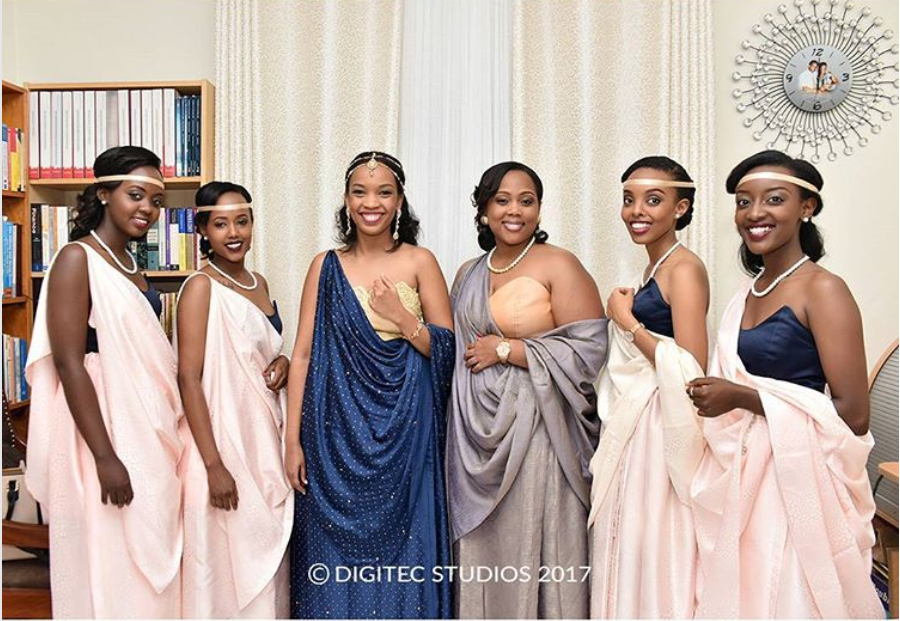You have probably seen many women in East Africa, especially prominent figures such as Rwanda’s first lady, Jeannette Kagame, donning the garb. But it might seem misplaced, looking more like an Indian sari than African wear if you do not know that it is the traditional ceremonial dress of women in Burundi, Rwanda, and Uganda.

Rwanda President with First Lady, Mr. and Mrs. Kagame (left to right)
Its name is Mushanana or Umushanana. It is a sash draped over one shoulder, worn over a tank top or bustier with a wrapped skirt bunched at the hips. Mushanana is made from silk, a gauzy and lightweight fabric to create a flowing effect, and polished cotton. Mushanana was formerly worn by older women on a daily basis but has now become a staple attire for formal occasions such as weddings, funerals, and church services. The dress is also the standard costume for female dancers in the country’s national dance troupes.

According to Margret Mukangwije, an elderly resident of Gahini, Rwanda, who spoke to the country’s paper, The New Times, the dress “is as old as the Rwandan culture. It has always been a part of the Rwandan culture even long before the colonialists came”.
Except, in pre-colonial times, “the attire was designed in two pieces and made out of animal skins locally known as impu“.
According to The New Times, when colonialists came, different materials were introduced into the market and bans were put on using animal skin for clothing. As such, the fabric of Mushanana was changed to silk and polished cotton but wonderfully, its design never changed.

Today, Mushanana is making a strong comeback on the continent, especially in Rwanda, and this time, with the young. According to sources, many young women are wearing the dress more often than not, saying that it is an important outfit because it represents the culture of their country.
“When you wear a Mushanana, you look respectful and more beautiful”, one young woman told local TV reporters in the interview below. Many store owners also say that their Mushana business is booming. In fact, one store owner said that she is able to pay her children’s school fees and sustain their livelihood with proceeds from just her Mushanana business.
As the case of Mushanana shows, Africa’s young are leading a renaissance on the continent in many fields such as tech and business; fashion and cultural identity is definitely part and parcel of this.










